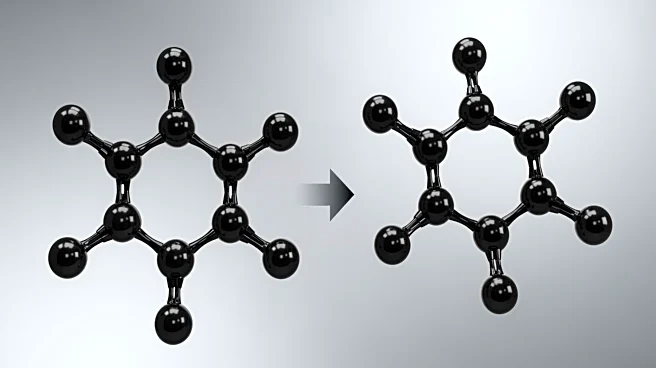What's Happening?
Scientists are engaged in a debate over the reasons why some autumn leaves turn red. The phenomenon has intrigued researchers, leading to various theories about the purpose of the red pigmentation. Niky
Hughes, a biologist at High Point University, has dedicated her career to studying these leaves, noting that the red pigments are newly created in autumn, unlike yellow pigments which are present all year. Susanne Renner from Washington University suggests that the red pigments act as a form of photoprotection, shielding leaves from excess sunlight after chlorophyll is broken down. Conversely, Marco Archetti from Pennsylvania State University proposes that red leaves may deter insects, as studies show aphids prefer green and yellow leaves over red ones. The debate continues as researchers explore other potential functions of red leaves, such as preventing fungal infections or providing camouflage.
Why It's Important?
Understanding why leaves turn red in autumn has broader implications for ecological studies and agricultural practices. If red pigmentation serves as a deterrent to insects, this could influence pest management strategies in agriculture, potentially reducing the need for chemical pesticides. Additionally, if red pigments provide photoprotection, this knowledge could inform how trees are cultivated in different climates, optimizing their health and growth. The ongoing research into leaf pigmentation also highlights the complexity of plant biology and the interconnectedness of ecosystems, emphasizing the need for continued scientific exploration to uncover the mysteries of nature.
What's Next?
Researchers like Niky Hughes are conducting experiments to further understand the factors influencing leaf color changes. Hughes is growing different oak species and varying their nitrogen intake to observe effects on leaf color. These studies aim to provide more definitive answers about the role of red pigmentation in leaves. As scientists continue to investigate, they may uncover new insights into plant biology that could have practical applications in agriculture and environmental conservation. The debate over red leaves is likely to persist, driving further research and collaboration among scientists.
Beyond the Headlines
The study of red autumn leaves touches on broader themes in science, such as the importance of biodiversity and the adaptive strategies of plants. It raises questions about how plants have evolved to interact with their environment and the role of color in these interactions. The research also underscores the value of interdisciplinary approaches, combining biology, ecology, and environmental science to address complex questions. As scientists delve deeper into these mysteries, they contribute to a greater understanding of the natural world and its intricate dynamics.











